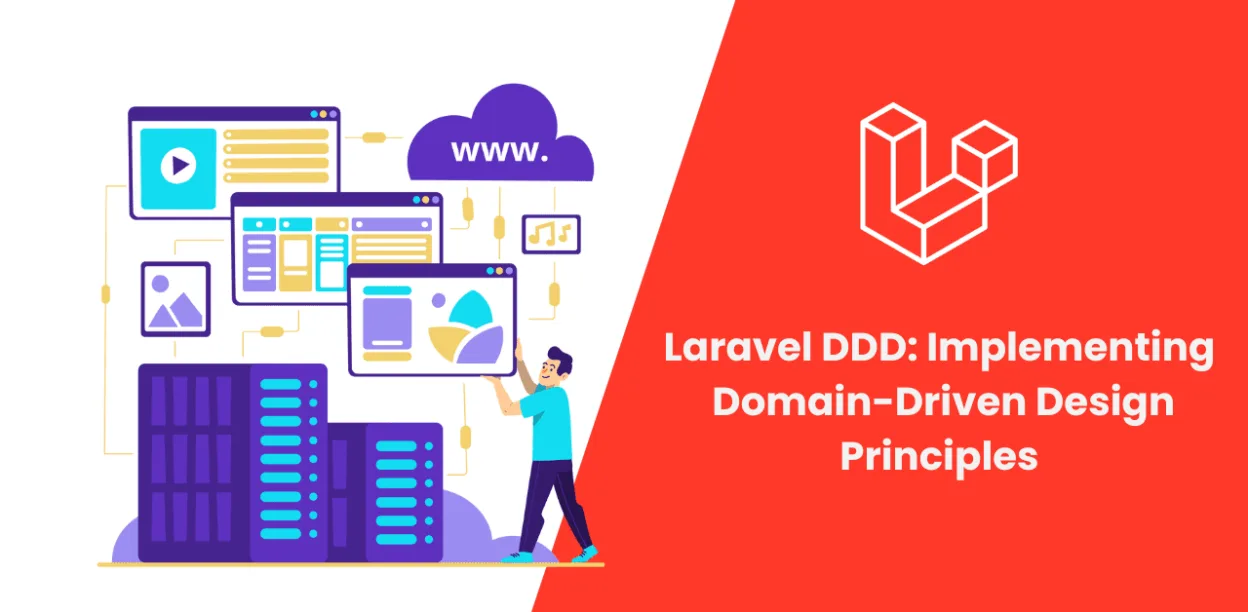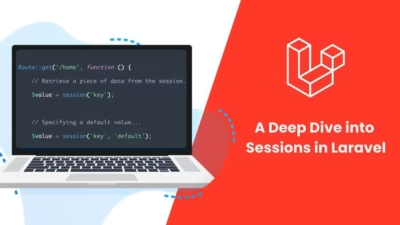In modern software development, especially for large and complex systems, Domain-Driven Design (DDD) has become a highly regarded methodology for aligning code architecture with business requirements. By focusing on the core business domain and structuring applications around it, DDD facilitates scalability, maintainability, and collaboration between developers and domain experts.
Laravel, as one of the most popular PHP frameworks, offers an ideal foundation for implementing DDD principles due to its flexibility and feature set. In this post, we will explore how to apply DDD principles in a Laravel project, with concrete examples to guide you through the process.
What is Domain-Driven Design?
Domain-Driven Design (DDD) is a methodology that prioritizes the core domain and domain logic in application development. It promotes the creation of a rich domain model that reflects the business’s complexities, allowing for clearer communication and a better structure between developers and domain experts.
Key concepts of DDD include:
- Domain: The area of knowledge or activity that the business is focused on.
- Entities: Objects that have a distinct identity and lifecycle within the domain.
- Value Objects: Immutable objects that do not have a distinct identity but are defined by their attributes.
- Aggregates: A group of related entities that are treated as a single unit for data changes.
- Repositories: Interfaces that manage the persistence of aggregates.
- Services: Domain services that encapsulate business logic that doesn’t naturally belong to an entity or value object.
- Domain Events: Events that signal an important occurrence in the domain, often triggering other processes.
Why Adopt DDD in Laravel?
Laravel’s conventional architecture is well-suited to many applications, but as complexity grows, DDD provides a more robust solution by separating concerns and organizing code around business logic. Here are some key reasons to adopt DDD in Laravel:
- Better alignment with business processes: DDD ensures that your application structure mirrors the business domain, making it easier to adapt to evolving requirements.
- Scalability: By encapsulating different parts of the system (domain, infrastructure, application), it becomes easier to scale and add new features without impacting existing functionality.
- Improved testability: The separation of concerns allows for easier unit testing and more granular control over the logic being tested.
- Long-term maintainability: DDD introduces clear boundaries within your application, making it easier to maintain and extend over time.
Implementing DDD in Laravel: A Step-by-Step Guide
Domain Layer Setup
The first step is to create a dedicated domain layer in your application. In Laravel, this typically involves creating a Domain directory within the app folder, separating it from Laravel-specific concerns like controllers and views.
app/
├── Domain/
│ ├── Entities/
│ ├── ValueObjects/
│ ├── Repositories/
│ ├── Services/
│ ├── Events/
Each of these subdirectories serves a specific role within the domain. The structure ensures that business logic is cleanly separated from application infrastructure.
Define Domain Entities
Entities in DDD are central to your domain model. They represent core business objects with unique identities. Let’s define a User entity for an e-commerce application:
namespace App\Domain\Entities;
class User
{
private string $name;
private string $email;
private string $address;
public function __construct(string $name, string $email, string $address)
{
$this->name = $name;
$this->email = $email;
$this->address = $address;
}
public function getName(): string
{
return $this->name;
}
public function getEmail(): string
{
return $this->email;
}
public function getAddress(): string
{
return $this->address;
}
}
In this case, User is an entity because it has a unique identifier (email) and represents a core part of the business domain.
Implement Value Objects
A Value Object differs from an entity in that it is immutable and doesn’t have an identity. For example, an Address in our e-commerce application can be represented as a value object:
namespace App\Domain\ValueObjects;
class Address
{
private string $street;
private string $city;
private string $postalCode;
public function __construct(string $street, string $city, string $postalCode)
{
$this->street = $street;
$this->city = $city;
$this->postalCode = $postalCode;
}
public function getStreet(): string
{
return $this->street;
}
public function getCity(): string
{
return $this->city;
}
public function getPostalCode(): string
{
return $this->postalCode;
}
}
The Address value object contains meaningful business data but doesn’t have its own lifecycle.
Repository Layer for Persistence
Repositories in DDD manage the persistence of aggregates. They serve as a layer between the domain and the data layer (e.g., a database). Define the UserRepository interface that abstracts away how users are stored and retrieved:
namespace App\Domain\Repositories;
use App\Domain\Entities\User;
interface UserRepository
{
public function findByEmail(string $email): ?User;
public function save(User $user): void;
}
The repository pattern allows us to change the underlying data storage without affecting domain logic. Here’s a possible implementation using Eloquent, Laravel’s ORM:
namespace App\Infrastructure\Repositories;
use App\Domain\Entities\User;
use App\Domain\Repositories\UserRepository;
use App\Models\UserModel;
class EloquentUserRepository implements UserRepository
{
public function findByEmail(string $email): ?User
{
$userModel = UserModel::where('email', $email)->first();
if (!$userModel) {
return null;
}
return new User($userModel->name, $userModel->email, $userModel->address);
}
public function save(User $user): void
{
$userModel = new UserModel();
$userModel->name = $user->getName();
$userModel->email = $user->getEmail();
$userModel->address = $user->getAddress();
$userModel->save();
}
}
Create Domain Services
Some operations do not naturally belong to an entity or value object. For these, you can use Domain Services. For example, user registration can be implemented as a domain service:
namespace App\Domain\Services;
use App\Domain\Entities\User;
use App\Domain\Repositories\UserRepository;
class UserRegistrationService
{
private UserRepository $userRepository;
public function __construct(UserRepository $userRepository)
{
$this->userRepository = $userRepository;
}
public function register(string $name, string $email, string $address): void
{
$user = new User($name, $email, $address);
$this->userRepository->save($user);
}
}
This service encapsulates the business logic for registering a new user, making it easier to test and modify without affecting other parts of the system.
Handle Domain Events
Domain Events represent significant occurrences within the business domain. For instance, you may want to trigger specific actions when a user registers:
namespace App\Domain\Events;
use App\Domain\Entities\User;
class UserRegistered
{
private User $user;
public function __construct(User $user)
{
$this->user = $user;
}
public function getUser(): User
{
return $this->user;
}
}
Laravel’s event system can listen for domain events and trigger notifications, log entries, or other actions based on the event.
Advantages of DDD in Laravel
- Scalability: DDD provides a scalable structure by separating core business logic from infrastructure, making it easier to extend the application as it grows.
- Improved Code Organization: The clear separation of concerns leads to more maintainable and readable code, as domain logic remains isolated from other layers.
- Better Testing: Each component in the DDD architecture (entities, services, repositories) can be independently tested, leading to more robust code.
- Alignment with Business: Since DDD focuses on reflecting the business domain in the code, it becomes easier to communicate with stakeholders and align the application with business goals.
Conclusion
By applying Domain-Driven Design in a Laravel project, you can build a highly maintainable, scalable, and domain-focused application. Laravel’s flexibility allows it to seamlessly adopt DDD principles, making it an excellent choice for complex applications that require clear separation between business logic and infrastructure.
Whether you are starting a new project or refactoring an existing one, implementing DDD in Laravel will ensure that your application remains adaptable to evolving business needs while maintaining high code quality.












